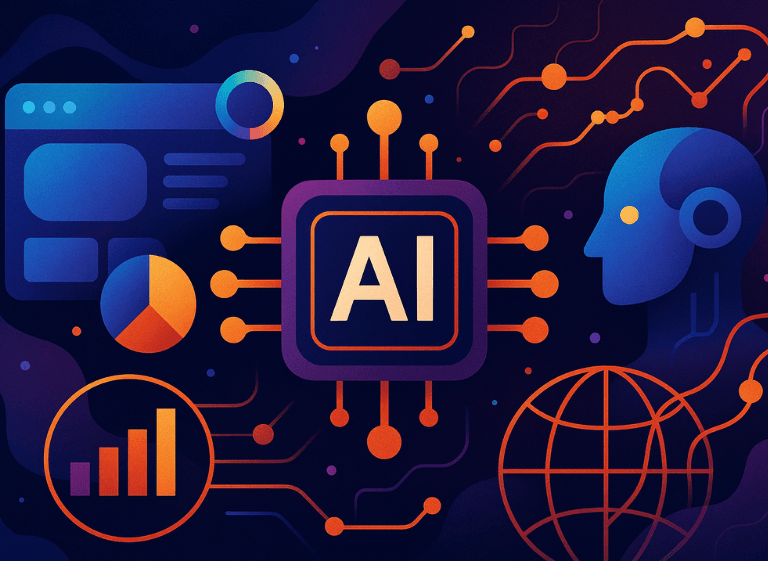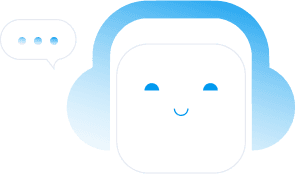AI tools
Web development
Real project examples
Product strategy
Data analytics
Performance optimization
AI Web Development in Action: Real Case Studies That Deliver
Nadiia Sidenko
2025-06-19
How can AI web development actually transform your product—not in theory, but in practice? Here's the reality: most AI discussions focus on possibilities rather than proven results. This article cuts through the noise to explore real-world outcomes from custom platforms. You'll discover how AI-driven features reshape UX, automate complex business workflows, reduce operational overhead, and accelerate team productivity. From recruitment automation to cross-platform integration, we'll examine how companies have achieved measurable outcomes—and what you can learn from their journey.

What is AI in Web Development and Why It Matters in 2025
AI in web development 2025 isn't about adding chatbots to your homepage—that ship has sailed. What we're seeing now is intelligence woven directly into application architecture, from backend data processing to real-time user interactions. As AI adoption reaches enterprise scale, organizations aren't just saving time; they're fundamentally changing how quickly they can adapt to market demands.
Today's implementations enable dynamic personalization at scale, intelligent data routing, predictive user behavior modeling, and continuous optimization that happens without human intervention. These aren't experimental features anymore—they're becoming table stakes. Companies that integrate AI strategically don't just gain efficiency; they unlock speed and agility that gives them a real competitive edge. As industry analysis shows, this trend's accelerating as infrastructure costs drop and AI models become more specialized.
How AI Enhances Business Websites: From Automation to UX
Here's what you've probably experienced: implementing new features used to mean months of planning, development, and testing. Now? Organizations with AI-powered websites are seeing improvements across user experience, operations, and revenue that would've seemed impossible just a few years ago. Smart personalization adjusts interface elements and content based on what users actually do, not what you think they'll do. Process automation handles the tedious stuff—content classification, lead routing, A/B testing—while your team focuses on strategy. What's particularly interesting is how AI accelerates development itself, recommending architectural decisions and catching UX issues before they hit production.
But here's the real game-changer: it's not just about efficiency. When McKinsey analyzed personalization effects, they found something remarkable—AI-driven customization doesn't just boost engagement; it becomes a direct revenue driver. We're talking 10–15% revenue increases within the first year for properly implemented systems.
Case Study: Adsee — AI-Powered Platform for Recruiting Automation
What Problem Adsee Solved for HR Teams
If you've ever worked with enterprise recruiting teams, you know the pain points: endless rewrites of job descriptions, juggling multiple platforms, and spending hours analyzing campaign performance manually. Adsee tackled these headaches head-on by building a comprehensive AI platform that actually centralizes the chaos.
Instead of switching between tools all day, HR teams now launch new positions, run AI-powered targeting campaigns, and get real-time analytics from one dashboard. The result? Recruiters can focus on what they do best—connecting with candidates—rather than fighting with their tech stack.
AI-Powered Features Built Into Adsee
What makes Adsee different isn't just the AI—it's how the AI actually works within the recruiting workflow. Built on a custom AI web app development framework, the platform uses advanced language models to generate optimized job postings, match roles with the right distribution channels, and deliver predictive analytics on candidate quality and campaign performance.
Everything flows through a visual dashboard that doesn't require a PhD to understand. These AI use cases in websites show what happens when you build technology around real workflows instead of forcing teams to adapt to your tech. The technical approach shares DNA with broader digital transformation strategies and cross-platform solutions like MindRecorder.
Case Study: MindRecorder — AI-Based Productivity Suite
Cross-Platform Architecture and AI Integration
Here's a problem you've probably encountered: your team creates tons of screen recordings for training, documentation, and decision-making, but extracting actionable insights from all that video content? That's where productivity dies.
MindRecorder solves this by integrating multiple AI models—including ChatGPT and Gemini—to automatically process video content, generate contextual summaries, and suggest follow-up tasks. The result isn't just time savings; it's better decision-making for distributed teams who can't afford to miss important details.
What's particularly clever about the architecture is how it handles the mobile reality. As mobile adoption patterns show, users expect intelligent functionality across all devices. MindRecorder demonstrates how AI can bridge platform gaps while maintaining the sophisticated functionality that enterprise teams actually need.
Custom AI Solutions vs Off-the-Shelf Platforms
Let's address the elephant in the room: should you build or buy? The decision goes way beyond initial development costs, and frankly, most teams underestimate what's at stake.
While SaaS solutions promise quick wins, custom AI platforms give you something that's increasingly valuable—complete control over your data, your algorithms, and your competitive advantage. Here's how they actually compare in practice:
| Capability | Custom AI Platform | Off-the-Shelf Tool |
|---|---|---|
| Personalization depth | Complete behavioral modeling and custom logic | Template-based with limited parameters |
| Infrastructure ownership | Full control over data, models, and scaling | Shared resources with vendor dependencies |
| AI model flexibility | Direct model tuning and custom training | Predefined models with limited customization |
| Integration architecture | Seamless connection with existing systems | API limitations and compatibility constraints |
| Long-term adaptability | Built to evolve with business requirements | Constrained by vendor roadmap and priorities |
| Performance optimization | Custom optimization for specific use cases | Generic optimization for broad market |
As comprehensive technical analysis reveals, it often comes down to competitive strategy: build when AI capabilities directly impact your competitive advantage, buy when you're dealing with standardized functions that don't need unique implementation. Simple as that—but the stakes couldn't be higher.
How to Integrate AI into Your Business Web Project Safely
Here's what nobody tells you about AI integration: jumping in without a plan isn't just risky—it's expensive. We've seen teams burn through budgets, accumulate technical debt, and launch solutions they can't maintain. Don't be that team.
Start with something specific where AI can deliver measurable ROI within 3–6 months. Before you write a single line of code, audit your current data infrastructure, establish clear KPIs, and make sure your development team actually has experience with the AI frameworks you're considering.
The most critical factor? Make sure your AI solves real problems for real users. PwC studies show that users embrace AI that seamlessly addresses their pain points while rejecting implementations that feel forced or gimmicky. It's not about the technology—it's about the experience.
Don't forget the operational side: data privacy compliance, model accuracy monitoring, and fallback systems for when AI fails (and it will). Teams that approach AI integration methodically avoid the common pitfalls that derail less structured implementations.
Choosing the Right AI Web Development Partner
Finding the right AI developers for hire isn't just about technical skills—though that's obviously important. What you really need is a team that gets product strategy, understands user experience, and thinks about business growth, not just cool technology.
Here's what to look for:
- Proven results with real AI use cases in websites – Don't just ask about capabilities; demand specific examples of how their implementations improved business metrics. Anyone can talk about possibilities.
- Deep experience with modern frameworks including ChatGPT web integration, custom model training, and multi-platform deployment. But here's the key: they should have production-scale experience, not just proof-of-concept work.
- Strategic thinking approach – The best partners ask tough questions about your business outcomes, user workflows, and success metrics before diving into technical details. Run from teams that lead with features instead of understanding context.
- Post-launch support capabilities – AI models aren't "set it and forget it." They need ongoing tuning, performance monitoring, and evolution as usage patterns change. Make sure your partner provides comprehensive maintenance and optimization.
- UX-focused methodology – AI should enhance user experience naturally, not create complexity. Look for teams that prioritize seamless integration over technological showmanship.
The most effective partnerships combine technical excellence with business understanding. Teams that have delivered platforms like Adsee or MindRecorder bring something invaluable—experience navigating the common pitfalls while keeping focus on measurable outcomes.

AI That Solves, Not Just Impresses
Custom AI solutions aren’t weekend projects—they require serious planning, development, and ongoing optimization. Real success comes from identifying operational bottlenecks and designing architecture that addresses your product’s specific needs. Whether you're applying AI to recruitment, productivity, or broader business automation, sustainable results depend on strategic execution, not flashy demos.
Instead of trial and error, working with a team that’s already delivered scalable AI platforms can help you move faster and more confidently. The real question isn’t whether AI matters—but how you make it work for your business.